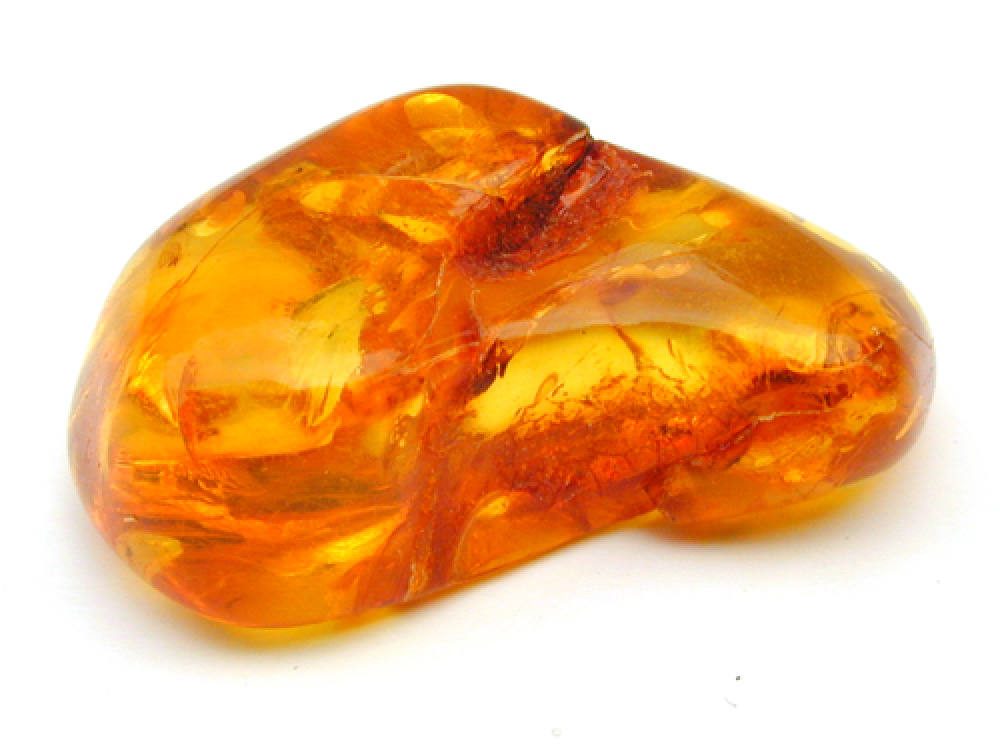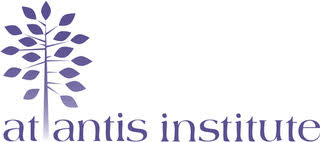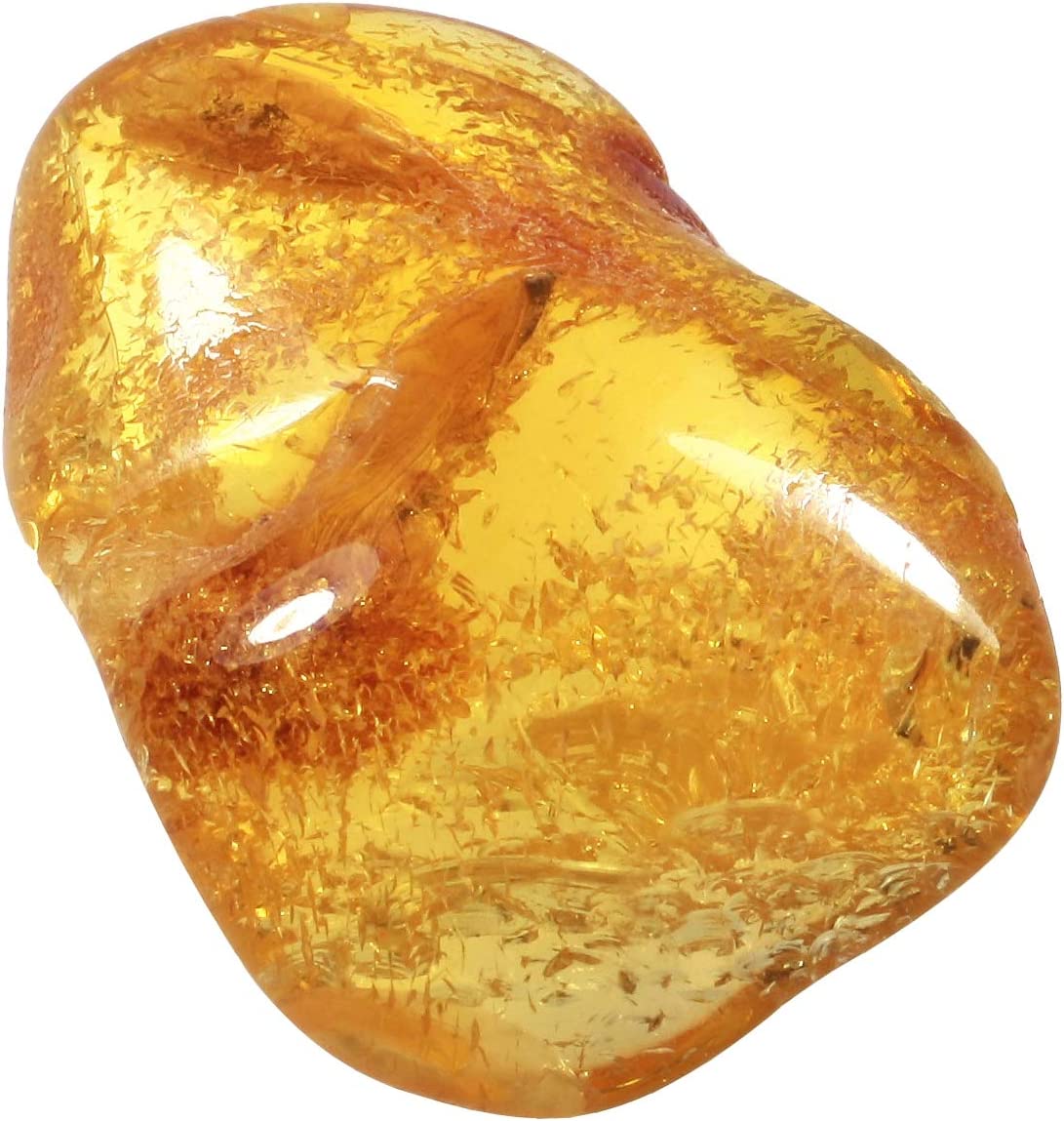Amber - Atlantis Institute Crystals Encyclopedia
Origin
Amber is derived from fossilised tree resin and can also be found in coal seams, where it is termed as resinite. Therefore not technically a Crystal
The types of Amber vary due to the degree and mix of chemical compounds. As Amber originates as a soft and sticky resin mass that transforms to copal, it can also contain traces of plant and animal inclusions.
Amber can be found along coasts as it is cast up from the seafloor and dredged or mined from underground galleries. When extracted, nodules of blue earth are removed, and its opaque crust is either eroded or removed by sand and water.
Amber is amorphous rather than crystalline and has a very low density, enabling it to float in saltwater. The leading source is in the Samland Coastal area of Prussia, known as the Kaliningrad Oblast of Russia. (changed in 1946)
History 
The name is derived from Arabic and referred originally to as ambergris. It has sometimes been called Kahroba, which is a Persian term meaning that attracts straw.
Its source shores are the Baltic sea, yet it has been found on Neolithic sites away from sources surmised due to trade routes established before the bronze age.
It is widely used in jewellery and, more intriguingly, for the mouth peace of pipes. The Turks use it in this regard as they say it cannot spread infection when passing the lines from mouth to mouth.
Specification
Amber is unusual in that the resin can contain exquisitely preserved plant structures, organisms, bugs and crustaceans. Anything that became covered by the resin when before it fossilised. The cavities shown are said to be where these organisms have disappeared.
Amber appears in various colours that, apart from the famous orange, yellow/brown, can range from white to almost black or, in rare cases, red, blue and green.
It usually appears in a translucent form that can be easily cut and polished for jewellery.
Varieties
The types of Amber mainly refer to the colour of the geographical sources. These include:
- Baltic Amber
- Black Amber
- Copal
- Delatynite
- Blue Amber
- Dominican Amber
 Esoteric Attributes
Esoteric Attributes
By their very nature, Crystals can receive and focus energy in different ways. Their molecular structure enables them to be used to amplify and convert energy. Hence, crystals have been used for centuries to aid healing and transmute energy both in the metaphysical and physical world.
Because each crystal family has different formational backgrounds, each also has different vibrational frequencies that can be harnessed and used for specific purposes. Each, therefore, have specific qualities that can be used to help a person heal on the many different levels of their being.
The following is a list of healing attributes associated with Amber.
Mental: Strengthens the belief in yourself and assists in positive mental well-being.
Emotional: Aids cheerfulness and strengthens trust. It enables you to feel more carefree,
Physical: A healer in many areas, especially the spleen, gall bladder, stomach, joints, liver, intestine, glands and mucous membrane. It is an aid against allergies, diabetes and rheumatism and helps children with teething issues.
Crystal Chart - Amber
Crystal: Amber
Mineralogy: Fossiliferous Resin
Geometric form: Amphorous
Formation: Secondary
Family: Resin
Birthstone: Amber is a non-traditional birthstone for November, and it is associated with the Zodiac signs Leo, Aquarius, Pisces, Cancer and Scorpio
Appearance: Resin lustre, unique in its cavities and external organism traces.
Aura: Amber releases and protects from negative energy and aligns the subtle bodies with the physical body.
Colour: Colours range from yellow to orange-brown, yet some Ambers can be red, green, blue and black.
Chakra: Amber is associated with the Sacral and Solar Plexus.
Reference and Resources
Michael Gienger, Healing Crystals, Earthdancer Books, 2009
The Columbia Encyclopedia, Crystal, 6th ed. 2014
World of Earth Science, Quartz, 2003
Encyclopedia of Occultism and Parapsychology, Crystal Healing, 2001
http://gemstone-dictionary.com/birthstones-by-month.php
New Oxford American Dictionary
Watch our Free Videos on Crystals











